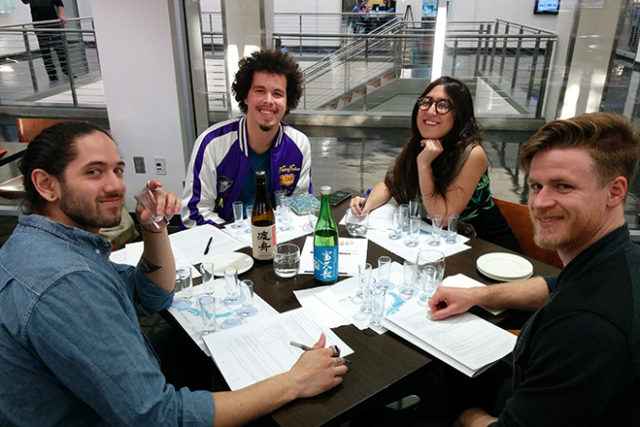
by Ai Isono, translated by Bruce Rutledge, the North American Post
On November 6, the Japan External Trade Organization (JETRO) held a Japanese sake seminar at Seattle Central Community College. Attendees, mostly from the restaurant and distribution sectors, were invited to get a better understanding of the charms of Japanese sake. About 30 people attended, trying six different sakes paired with cheese.
At the seminar, Marcus Pakiser, dubbed a Sake Samurai by the Japan Sake Brewers Association Junior Council, gave a lecture about sake. He explained the differences between ginjo, daiginjo, and junmai, talked about the different types of rice used to make sake, and imparted other basic knowledge about the drink. He also added some behind-the scenes anecdotes about work done at sake breweries. “Japanese sake really goes with all sorts of food,” Pakiser said. “I want to put an end to the conventional wisdom that sake has to go with sushi.” He also pointed out that one advantage sake has over wine is that the bigger the bottle, the more cost efficient the 1-ounce pour becomes, making it economically attractive to restaurants.
JETRO is currently putting a lot of effort into public relations for the sake industry. From 2016 to 2017, consumption of sake in the US rose by 16%, but that still accounts for just 0.1% of all the alcohol consumed in the country. The Japanese government is aiming to make global exports of agricultural, forestry, fishery and food products reach 1 trillion yen, and part of that effort is focused on expanding sales of sake in the US.
James Turpin of Yoroshiku attended the event with some colleagues. He said that he likes sake so much that one of his dreams is to visit a Japanese sake brewery in the near future. “The Wataribune sake I drank today is one of those brands that makes me so into sake,” he said. “It was a good chance to get my friends to better understand sake.”






